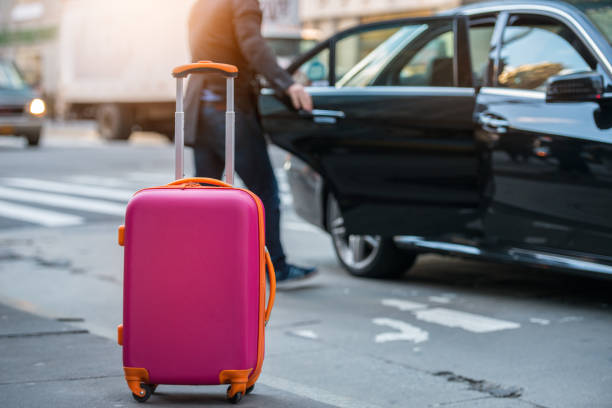
As environmental awareness becomes more critical, planning a sustainable family vacation can help instil eco-friendly values in kids while creating lasting memories. Sustainable travel means minimizing your environmental footprint and supporting local communities and wildlife preservation. Here are some tips to travel sustainably with children, making your next family vacation enjoyable and eco-conscious.
The first step to a sustainable family vacation is selecting a destination that prioritizes environmental conservation. Many eco-friendly destinations are focused on preserving natural resources, protecting local wildlife, and supporting local economies. National parks, natural reserves, and destinations with strong sustainability programs are excellent choices.
Look for accommodations that are certified as eco-friendly. Many hotels, including family-focused resorts like Manor & Ashbury Resorts, are adopting sustainable practices such as recycling, energy-efficient facilities, and eco-friendly water management. Opt for lodgings that align with these values to ensure that your stay has a minimal environmental impact.
Travel Using Environmentally Friendly Transportation
Transportation can significantly impact the environment, especially air travel, which generates large amounts of carbon emissions. If possible, choose destinations within driving or train distance to reduce emissions. Trains are generally more eco-friendly and can be a fun way for kids to see the landscape as you travel.
If flying is unavoidable, consider booking direct flights to minimize your carbon footprint, as takeoffs and landings use the most fuel. Some airlines also offer carbon offset programs, allowing travelers to invest in environmental projects that counteract emissions. Teaching kids about carbon offset programs can make them more mindful of travel’s environmental impact.
Pack Light and Avoid Single-Use Plastics
Packing light doesn’t just make travel easier—it also contributes to sustainability by reducing the fuel needed to transport heavy loads. When traveling with children, aim for multi-use items and eco-friendly alternatives to common single-use products. For example, bring refillable water bottles, cloth snack bags, and reusable utensils to reduce plastic waste on the go.
In addition to reusable items, choose eco-friendly toiletries like biodegradable shampoo and toothpaste tablets. Packing light and sustainable alternatives teach kids the importance of minimizing waste, both on vacation and at home.
Support Local Businesses and Eco-Tours
An essential part of sustainable travel is supporting local businesses. When you purchase from small local businesses, more of your money remains in the community, aiding the local economy. Opt for local restaurants, markets, and souvenir shops instead of large chains, as they are likely to offer more authentic and eco-conscious options. Many local vendors produce items sustainably and support community preservation initiatives.
When choosing tours or excursions, look for eco-certified operators that prioritize environmental education and conservation. Eco-tours often provide unique, educational experiences for kids, from learning about local ecosystems to understanding conservation efforts. These experiences can deepen their appreciation for nature and encourage them to protect it.
Practice Leave-No-Trace Principles
The Leave-No-Trace principles are simple, practical guidelines for reducing your environmental impact outdoors. Teach children to follow these guidelines, such as packing out all trash, respecting wildlife, and sticking to trails to avoid disturbing natural habitats.
Make a game out of picking up litter or packing snacks in reusable containers. When kids see the immediate impact of their actions on nature, they become more invested in protecting it. Following these principles helps ensure that natural sites remain beautiful for future visitors while teaching kids responsibility for the environment.
Teach Kids About Wildlife Conservation
Wildlife tourism can be an incredible learning experience for children, but it’s essential to choose responsible operators and activities. Avoid attractions where animals are kept in captivity or exploited, as these practices can be harmful. Instead, look for sanctuaries and reserves that focus on conservation and rehabilitation, allowing kids to see animals in a way that respects their natural behavior and habitat.
Engage children by explaining how their actions, such as not littering or staying on designated paths, help protect wildlife. Many places offer educational programs designed for families, which provide insight into the importance of conservation and the roles that animals play in their ecosystems.
Offset Your Carbon Footprint
Although reducing emissions is a priority, some carbon output is inevitable with travel. Consider investing in carbon offset programs to balance the environmental impact of your trip. Many offset programs support reforestation, renewable energy, and conservation projects. Some companies allow you to choose specific projects, which can make the experience more personal for kids.
Involve them in selecting a project, whether it’s planting trees or protecting an endangered species’ habitat. These programs help create a meaningful connection between travel and environmental stewardship, showing kids that every contribution counts.
Incorporate Eco-Friendly Activities
When planning activities, focus on low-impact options that allow the family to engage with the environment responsibly. Hiking, biking, bird-watching, and visiting eco-parks are excellent sustainable activities. Many destinations offer family-friendly conservation projects, such as beach clean-ups, tree planting, or visits to organic farms, where kids can learn firsthand about sustainability.
These activities can make vacations memorable and meaningful, providing a hands-on experience that reinforces the importance of protecting the planet. They also offer a chance to teach kids about respecting nature while still having fun.

Abdul Qadeer is highly experienced in creating engaging content that adds real value to a blog, website, or brand. He is creating content for multiple niches like technology, SEO, Marketing, Health, Education and Career Development, etc.